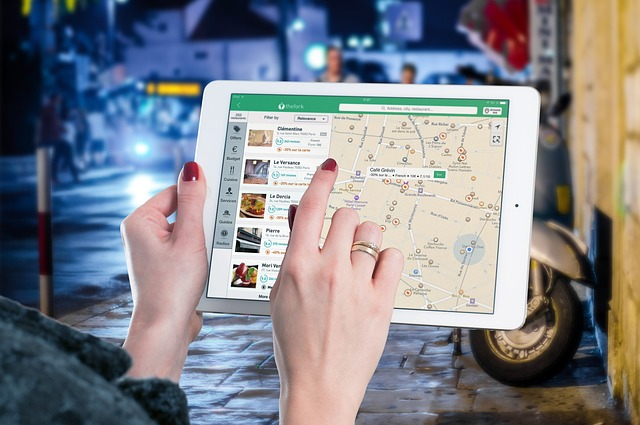A Complete Guide to Social Media Marketing for Small Business

Social media marketing is essential to any small business’s marketing strategy. The right approach can help you reach a wider audience, generate leads and increase conversions. In this Guide, we’ll cover everything you need to know about social media marketing for small businesses, from setting up your accounts to creating a successful strategy.
What Is Social Media Marketing?
Social media marketing uses social media platforms such as your Facebook page, Instagram, Twitter and LinkedIn to promote your business and engage with potential customers. It involves creating content that resonates with your target audience and encourages them to take action. This could be anything from liking or sharing your posts to signing up for your newsletter or purchasing.

Why Is Social Media Marketing Important?
Social media allows small businesses to reach many people at once without spending too much money on advertising. It also allows you to build relationships with potential customers and create brand loyalty. Additionally, it can help you gain valuable insights into what your customers are looking for so that you can tailor your products and services accordingly.
How Do You Get Started With Social Media Marketing?
The first step in starting social media marketing is setting up accounts on various relevant platforms for your business. Once you have created accounts on each platform, it’s important to create a consistent brand identity across all of them using the same profile picture, logo and colour scheme. Create profiles that accurately reflect who you are as a small business owner and what you offer.
Next, it’s time to start creating content for social posts that resonates with your target audience. This could include blog posts, videos, infographics or even simple status updates about what’s going on in your business. Make sure that whatever content you post on the social media calendar is engaging and relevant to your audience so they will be more likely to interact with it.
Finally, it’s important to measure the success of your social media efforts by tracking metrics such as likes, shares and comments on each post as well as overall engagement rates across all platforms. This will help you understand which social media management tools and types of content are performing best so that you can adjust your strategy accordingly.
Decide what kind of social media presence fits your brand.
When determining the social media presence that best fits your brand, assessing your target audience and the other social media platforms they frequent is crucial. Each social media platform has unique demographics, user preferences, and content types. For instance, Instagram and Pinterest are ideal for visual-heavy businesses such as fashion, food, or design. At the same time, LinkedIn is more suited for B2B companies and professional networking. By identifying the most social media platforms where your target audience spends the most time, you can optimize your social media presence to align with the interests and preferences of your potential customers.

Another consideration when shaping your brand’s social media presence is the tone and personality you want to convey. Your brand’s voice should be consistent across all major social media platforms. Still, how you express that voice may vary depending on the social platform’s culture and etiquette. For example, Twitter often rewards witty, concise content, while Facebook allows for longer, more in-depth posts. Additionally, think about the type of content you want to share – educational, promotional, entertaining, or a mix of all three – and choose the platforms that best support your content strategy. You can create a cohesive and effective marketing strategy by tailoring your social media presence to your brand’s identity and the platforms that best cater to your target audience.
Business uses for social media.

In today’s digitally-driven world, social media has become an indispensable tool for businesses of all sizes to connect with customers, build brand awareness, and drive growth. With billions of users across platforms like Facebook, Instagram, Twitter, and LinkedIn, social media offers unparalleled opportunities for companies to reach and engage their target audience, share valuable content, and foster meaningful relationships. By leveraging the power of social media, businesses can promote their products and services and gain insights into customer preferences, monitor industry trends, and establish themselves as thought leaders within their respective niches. Social media has transformed how businesses communicate, market, and grow, making it a vital component of any modern marketing strategy.
Marketing
Businesses use social media for marketing in various ways to achieve their goals, such as increasing brand awareness, driving website traffic, and generating leads. One common approach is to create and share engaging content that resonates with the brand values target audience. This content can take various forms, including blog posts, videos, infographics, and images, all aimed at capturing the attention of potential customers and encouraging them to interact with the brand. By consistently posting high-quality content, businesses can establish themselves as authorities within their industry, foster trust and credibility, and ultimately, attract new customers.

Another important aspect of social media marketing for businesses is leveraging paid advertising options offered by platforms like Facebook, Instagram, and LinkedIn. These targeted ad campaigns enable companies to reach specific demographics based on age, location, interests, and browsing behaviour. By utilizing these advanced targeting features, businesses can deliver personalized and relevant ads to potential customers, increasing the likelihood of conversions and maximizing return on investment. Furthermore, social media platforms offer valuable analytics tools that allow companies to track the performance of their marketing efforts, gain insights into customer behaviour, and refine their strategies to optimize results continually. In summary, businesses harness the power of these social media marketing tools to broaden their reach, engage with their audience, and drive sustainable growth.
Understand your customers better.
Businesses use social media to understand their customers better by gathering valuable insights and feedback through various means, ultimately helping them tailor their products, services, and marketing strategies to meet customer needs more effectively.
Businesses achieve this by monitoring conversations and mentions of their brand on social media platforms. By paying attention to these discussions, companies can gauge customer sentiment, see community engagement, identify common pain points, and uncover valuable suggestions for improvement. This real-time feedback allows businesses to address concerns promptly and demonstrate their commitment to customer satisfaction, fostering stronger relationships with their audience.

Another method businesses employ is analyzing the engagement metrics and demographic data provided by social media platforms. These analytics tools offer detailed information about the audience interacting with a company’s content, such as age, gender, location, and interests. By understanding the demographics and preferences of their audience, businesses can create more targeted and relevant content, ultimately leading to higher engagement rates and increased customer loyalty.
Social media platforms also facilitate direct communication between businesses and customers through comments, direct messages, and even chatbots. This two-way communication allows companies to ask for opinions, conduct surveys or polls, and gather first-hand feedback from their audience. Businesses can then use this information to make informed decisions about product development, marketing campaigns, and overall customer experience.
In summary, businesses leverage social media to better understand their customers by monitoring conversations, utilizing analytics tools, and engaging in direct communication. These insights enable companies to make data-driven decisions and cater to their customer’s needs more effectively, ultimately contributing to long-term success.
Testing and measuring campaigns
Social media platforms have become an effective and inexpensive testing ground for advertising campaigns, allowing businesses to experiment with various elements of their adverts before committing to larger-scale promotions. By running short-term tests on various social media networks, companies can evaluate the effectiveness of individual components of their advertisements, such as headlines, copy, and images, and make data-driven decisions to optimize their campaigns.

One advantage of testing ads on social media is the immediate feedback and analytics these platforms provide. Businesses can quickly assess engagement metrics like likes, shares, comments, click-through rates, and conversions to determine which ad variations resonate best with their target audience. This rapid analysis enables marketers to identify high-performing ad elements and make necessary adjustments to underperforming ones, ensuring maximum impact and return on investment.
Another benefit of using social media as a testing ground for advertising campaigns is the ability to conduct A/B or split testing. This approach involves creating multiple versions of an advertisement with slight variations in elements like headlines, copy, or images. By running these different versions simultaneously and analyzing their performance, marketers can pinpoint the most effective combination of ad elements that drive desired results.
Moreover, social media advertising platforms offer advanced targeting options, allowing businesses to reach specific target audience segments during testing. This precise targeting ensures that the test ads are being served to the most relevant users, providing more accurate insights into the potential success of a campaign.
In conclusion, social media is invaluable for businesses testing and refining their advertising campaigns. With its cost-effective nature, real-time feedback, and advanced targeting capabilities, social media offers a powerful platform for companies to experiment with ad elements and maximize the effectiveness of their marketing efforts.
Branding and Increasing your brand awareness.
Social media plays a pivotal role in developing a business’s brand and increasing brand awareness by providing a great platform and free tools for companies to showcase their unique identity, engage with their target audience, and share valuable content that resonates with potential customers.

Firstly, social media allows businesses to establish a consistent visual and tonal brand identity across various platforms. Businesses can, on social media followers, create a recognizable online presence that sets them apart from competitors by using the same profile picture, logo, and colour scheme and maintaining a consistent brand voice in all posts and interactions. This consistency helps strengthen brand recall and build trust among potential customers.
Secondly, social media enables businesses to engage directly with their target audience through likes, comments, shares, and direct messages. Businesses can their social presence and foster a sense of community around their brand by actively participating in conversations, responding to customer inquiries, and addressing feedback. This active engagement helps build strong relationships with potential customers. It encourages social media users to become brand advocates, further amplifying brand awareness.
Another way social media contributes to brand development and awareness is by providing a platform for sharing valuable, engaging, and shareable content. This content can take various forms, such as blog posts, videos, images, or infographics. It should be tailored to the interests and preferences of the target audience. By consistently posting high-quality content that resonates with potential customers, businesses can position themselves as thought leaders within their industry and attract new followers who will likely become customers.
Additionally, leveraging the power of influencers and user-generated content can significantly boost brand awareness on social media. Using social media tips, businesses can tap into an existing audience and expand their reach organically by partnering with influencers whose values align with your brand or encouraging customers to share their experiences with your products or services on a visual platform.
In summary, social media offers businesses a powerful platform to develop their brand, increase awareness, and foster strong relationships with their target audience. By maintaining a consistent brand identity video sharing platform, engaging with users, sharing valuable content, and leveraging influencers and user-generated video content, businesses can effectively utilize social media to drive growth and success.
Customer service
Social media has become an important channel for businesses to enhance customer service, offering a convenient and accessible platform for customers to voice concerns, ask questions, and share feedback. To effectively use social media for customer service, businesses should actively monitor their accounts for mentions, comments, and direct customer messages, ensuring timely and appropriate responses to their inquiries. By maintaining a dedicated team or personnel responsible for handling customer service through their social media accounts, businesses can demonstrate their commitment to addressing customer needs and building trust. Furthermore, it’s important to maintain a consistent and empathetic brand voice when engaging with customers, as this helps create a positive brand image and fosters customer loyalty. Proactively sharing helpful resources, such as FAQs, how-to guides, and product updates, can also aid in providing valuable information to customers and reducing the volume of common inquiries. Leveraging social media as a customer service tool allows businesses to enhance their overall customer experience, leading to higher satisfaction and long-term success.
Build long-term relationships with your customers.
When used effectively, social media can be a powerful tool in building long-term customer relationships and turning customers into raving fans. By fostering genuine connections with customers on social channels through engaging content, personalized interactions, and responsive customer service, businesses can create a loyal community of followers who support their brand and actively promote it within their networks. This sense of connection, community management and trust encourages customers to become brand advocates, sharing their positive experiences and recommending the products or services to others.
One way to strengthen customer relationships on social media is by sharing authentic and relatable content that reflects the brand’s values and personality. Businesses can also encourage user-generated content, such as product reviews, testimonials, or creative uses of their products. This helps establish a sense of camaraderie among customers and strengthens their emotional connection to the brand. Additionally, celebrating customer milestones, acknowledging their feedback, and rewarding loyal customers with exclusive offers or promotions can further enhance the customer experience and solidify loyalty. By prioritizing customer engagement and consistently delivering value through social media, businesses can cultivate a devoted community of fans who actively contribute to the brand’s growth and success.
Use social media for crisis management.
Social media can support crisis management efforts when businesses face unforeseen challenges or negative situations that may impact their reputation. By providing a real-time communication channel, social media enables companies to quickly address issues, share information, and demonstrate transparency, ultimately helping to mitigate potential damage to their reputation management brand image.

In times of crisis, businesses can use social media platforms to proactively communicate with their audience, providing timely updates on the situation, acknowledging concerns, and outlining the steps to resolve the issue. This open and transparent communication helps build customer trust, reassuring them that the company is actively working towards a solution. Additionally, by monitoring social media conversations related to the crisis, businesses can gain valuable insights into customer sentiment and concerns, allowing them to tailor their response strategy accordingly. Addressing any misinformation or rumours on social media can also prevent further crisis escalation. In summary, effectively leveraging social media during crisis management allows businesses to maintain open lines of communication, demonstrate accountability, and protect their brand reputation.
How to Choose the platforms that fit your audience

Choosing the right social media platforms for your business is crucial for effectively reaching and engaging with your target audience. To determine which platforms are the best fit for your audience, follow these steps:
Define your target audience:
Begin by identifying your target audience’s key demographics and characteristics, such as age, gender, location, interests, and online behaviours. This information will help you understand where your potential customers are most active and what types of content they prefer.
Research platform demographics:
Each social media platform has its unique user base and demographics. Investigate the demographics of various platforms to identify which ones align closely with your target audience. For example, platforms like Instagram and TikTok may be more suitable if your audience comprises mainly young adults. LinkedIn might be more appropriate for targeting professionals in a specific industry.
Consider content format and preferences:
Different social media platforms specialize in various content formats. When selecting a platform, consider the type of content that resonates with your target audience and aligns with your brand’s strengths. If your business focuses on visually appealing products or services, platforms like Instagram and Pinterest, which emphasize visual content, may be ideal. Conversely, Twitter or LinkedIn might be better suited for sharing informative articles, industry news, or thought leadership content.
Analyze competitors’ social media presence:
Examine your competitors’ social media strategies and note the platforms they use and the level of engagement they receive. This analysis can provide insights into the most effective platforms within your industry and help you identify potential growth opportunities.
Test and evaluate:
Feel free to experiment with different platforms and track your results.
Monitor key performance indicators (KPIs) such as engagement, reach, and conversions to determine the effectiveness of each platform in reaching and connecting with your target audience.
Use this data to refine your social media strategy, focusing on the platforms that deliver the best results for your business.
In conclusion, choosing the right social media platforms for your target audience involves understanding their demographics, preferences, and online behaviours, as well as evaluating the strengths and focus of each platform. By carefully selecting the most suitable platforms and creating tailored content for your audience, you can maximize the impact of your social media marketing efforts and drive long-term success.
Share customer stories and what your products mean to them.
Using social media tools to share customer stories and showcase the impact of your products on their lives can be a powerful marketing strategy that helps build trust, credibility, and emotional connections with potential customers. Here are some ways to effectively share customer stories on social media platforms:

Testimonials and Reviews:
Encourage customers to share their experiences with your products or services through written testimonials or reviews. You can then feature these on your social media channels, giving credit to the customers who provided the feedback. This validates the quality of your offerings and demonstrates that you value your customers’ opinions.
User-Generated Content (UGC):
Invite your customers to share photos, videos, or other creative content featuring your products, using a specific hashtag or tagging your brand’s social media account. By reposting this user-generated content, you showcase real-life examples of how customers use and benefit from your products, which can inspire others also to try them.
Case Studies and Success Stories:
Share more in-depth stories of customers who have experienced significant positive changes or improvements in their lives due to using your products or services. These case studies or success stories can be presented as blog posts, videos, or even social media posts, highlighting the customer’s journey and your product’s role in their transformation.
Customer Spotlights:
Regularly feature individual customers on your social media channels, highlighting their backgrounds, interests, and experiences with your products. This personal approach humanizes your brand and helps potential customers relate to those who have already found value in your offer.
Live Interviews or Q&A Sessions:
Organize live sessions on platforms like Instagram or Facebook, where you invite customers to share their stories, discuss their experiences, and answer questions from the audience. This interactive format allows potential customers to engage directly with those who have used your products, fostering trust and credibility.
By incorporating customer stories into your social media content strategy, you can effectively showcase the real-world impact of your products and services, helping to build strong connections with your audience and ultimately driving brand loyalty and growth.
What social media platforms are best for my business?
Knowing your customer is a crucial aspect of any marketing strategy, and this principle applies to deciding which social media platforms to use for your business. By understanding your target audience’s demographics, interests, and online behaviour, you can make informed decisions about where to focus your social media efforts for maximum impact and engagement.
Start by thoroughly researching your target audience, including their age, gender, location, and preferences. This information will help you identify which social media platforms are most popular among your target market. For example, if your target audience consists primarily of young adults, Instagram and Snapchat might be more suitable platforms for your business. In contrast, LinkedIn may be more appropriate for targeting professionals in a specific industry.
Additionally, consider the type of content that resonates with your audience and align it with the platform’s strengths. For instance, if your business focuses on visually appealing products or services, such as fashion, travel, or design, platforms like Instagram and Pinterest, which emphasize visual content, would be ideal. On the other hand, if your business relies heavily on informative articles or industry news, Twitter or LinkedIn might be better suited for sharing this type of content.
Monitor your competitors’ social media presence as well, taking note of the platforms they use and the level of engagement they receive. Analyzing your competitors’ strategies can provide valuable insights into which social media trends and platforms you are most effective within your industry and help you identify potential growth opportunities.
Lastly, feel free to experiment with different platforms and track your results. Monitor key performance indicators (KPIs) such as engagement, reach, and conversions to determine the effectiveness of each platform in reaching and connecting with your target audience. Use this data to refine your social media strategy, focusing on the platforms that deliver the best results for your business.
In conclusion, knowing your customer is essential in determining your marketing small business on social media’s most suitable social media platforms. By understanding your target audience’s demographics, preferences, and habits, you can tailor your social media presence to maximize engagement, reach, and, ultimately, the success of your marketing efforts.
What are the disadvantages of social media for business?

While social media offers numerous benefits for businesses, some disadvantages should be considered when incorporating it into your marketing strategy. Here are some potential drawbacks of using a social media site for marketing small businesses on social media only:
Time-consuming:
Managing a successful social media presence requires consistent effort and attention, including creating and curating content, engaging with followers, and monitoring analytics. For small businesses with limited resources, this can be time-consuming and may divert focus from other essential tasks.
Negative feedback and criticism:
Social media platforms provide an open forum for customers to share their opinions and experiences, sometimes leading to negative feedback or public criticism. While constructive criticism can help businesses improve, handling negative comments and reviews in public can be challenging and potentially harm the brand image if not addressed appropriately.
Risk of oversharing or miscommunication:
Social media’s real-time and informal nature can sometimes result in businesses sharing information that may be deemed inappropriate or unprofessional. Additionally, messages can be easily misinterpreted due to the limitations of text-based communication, potentially leading to misunderstandings or conflicts with customers.
Privacy and security concerns:
Businesses need to be cautious about sharing sensitive information on social media platforms, as there is always a risk of data breaches or unauthorized access. Additionally, ensuring compliance with privacy regulations, such as GDPR, is crucial when handling customer data on social media.
Difficulty measuring ROI:
Despite the availability of various analytics tools, measuring the return on investment (ROI) for social media marketing efforts can take time and effort. Quantifying the direct impact of social media activities on sales and revenue may take some work, making it difficult for businesses to assess the true value of their social media campaigns.
Constantly evolving landscape:
Social media platforms and algorithms continually change, requiring businesses to stay up-to-date with the latest trends, features, and best practices. Adapting to these changes can be demanding, especially for smaller businesses with limited resources.
Despite these disadvantages, social media remains a valuable marketing tool for businesses when used strategically and with awareness of the potential drawbacks. By addressing these challenges proactively and focusing on delivering value to your audience, businesses can still reap the benefits of social media marketing while minimizing its downsides.
Step-by-Step Guide To implement your strategy

Step 1: Define Your Goals
Before diving into any social media strategy, defining your goals is essential. What do you want to achieve through social media? Do you want to increase brand awareness, generate leads, or drive sales? Once you’ve identified your social media goals, you can develop a strategy aligning with your objectives.
Step 2: Know Your Audience
To create content that resonates with your audience, you need to know who they are. Conduct market research to understand your target audience’s interests, pain points, and behaviours. This information will help you develop a content strategy that speaks directly to your ideal customer.
Step 3: Choose the Right Social Media Platforms
Not all social media platforms are created equal. Each platform has a unique user base, content format, and engagement rate. Your choice of social media platform should align with your business goals and target audience. For example, if your business targets B2B clients, LinkedIn would be a more appropriate platform than Instagram.
Step 4: Develop a Content Strategy
Now that you know your audience and the right social media platforms, it’s time to develop a content strategy. Your content strategy should include the type of content you’ll create high-quality content for, the frequency of posting content and the tone of voice. Remember to keep your content consistent with your brand identity.
Step 5: Plan Your Content Calendar
Creating a content calendar will help you stay organized and ensure your content is consistent. Plan your content so you’re not scrambling for ideas at the last minute. Your content calendar should include the date and time of posting, the content format, and any relevant hashtags.
Step 6: Engage With Your Audience
Social media is a two-way conversation. Ensure you engage with your audience by promptly responding to comments and messages. Engaging with your audience shows that you value their input and helps to build a relationship with them.
Step 7: Analyze Your Results
Finally, it’s essential to analyze your social media results regularly. Use social media analytics tools to track your performance, including engagement rates, reach, and website traffic. Analyzing your results will help you identify what’s working and not, so you can adjust your strategy accordingly.
Conclusion
Creating a winning social media strategy for your small business takes time and effort, but it’s worth it. By defining your goals, knowing your audience, choosing the right social media platforms, developing a content strategy, planning your social media content calendar, engaging with your audience, and analyzing your results, you’ll be well on your way to social media success. Remember to stay consistent, stay true to your brand, and always be willing to adapt and adjust your strategy as needed.
Ready to advance your business with a tailored and results-driven social media strategy? Don’t hesitate to reach out and let our team of experts guide you on the path to online success. Contact us today and discover how we can help you unlock the full potential of social media, drive engagement, and skyrocket your brand’s growth. It’s time to turn your vision into reality – get in touch now! joel@coachingsuccess.ca



